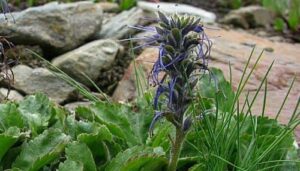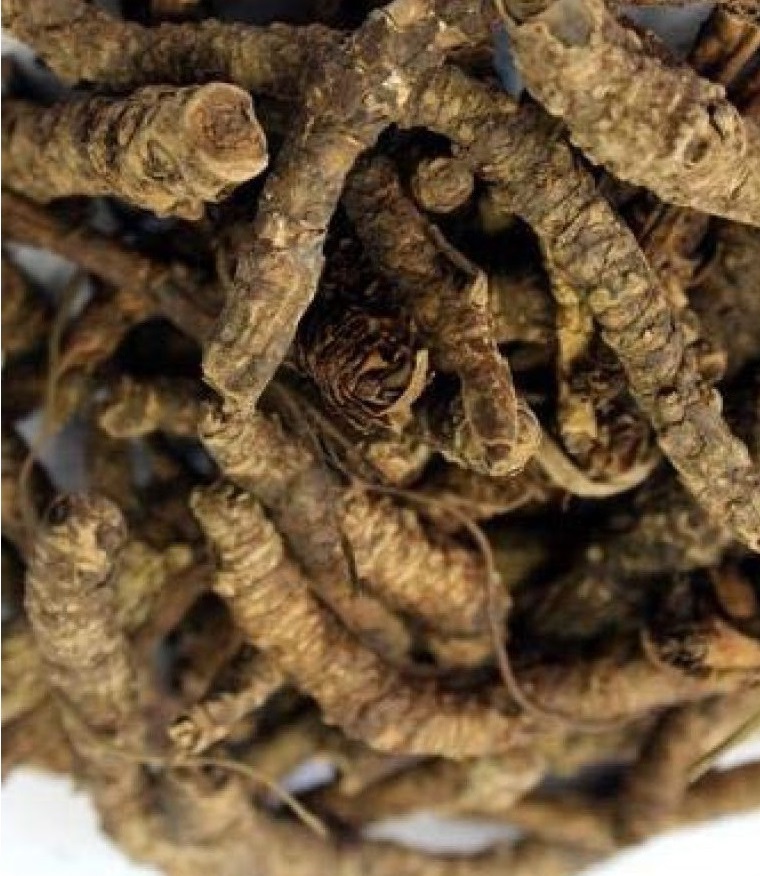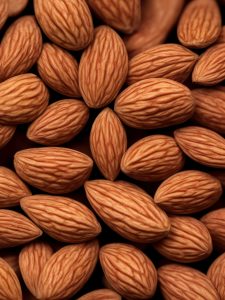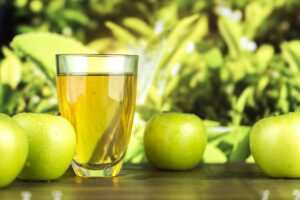Its scientific name is Picrorhiza Kurroa, and it belongs to the Scrophulariaceae family.
This plant grows spontaneously in the Himalayas at high altitudes: between 9,800 and 16,000 feet (or between 3,000 and 5,000 meters).
It is also known as Hu Huang Lian.
The parts used are the tuberous roots and the rhizomes, from which the active ingredient is extracted.
Regarding the chemical constituents, inside we find:
 Iridoid glycosides (kutkin)Phenolic glycosideCucurbitacins-type triterpenes (what makes it very bitter)Polysaccharides.
Iridoid glycosides (kutkin)Phenolic glycosideCucurbitacins-type triterpenes (what makes it very bitter)Polysaccharides.
Its main constituent, Picroliv is also reported to have a choleretic effect and to prevent liver damage caused by ethanol, chemicals, and microorganisms. Particularly indicated in the prevention and treatment of hepatitis caused by drugs, alcohol, toxic substances and heavy metals.
The plant is traditionally used in Ayurvedic medicine for the treatment of numerous diseases (asthma, constipation, candida infections, arthritis, eczema, digestive diseases, liver intoxications, autoimmune diseases, vitiligo, bronchitis), without however finding many positive results in conventional medicine.
Picrorhiza is still the subject of numerous studies to demonstrate its immunostimulating, antiasthmatic and anti-inflammatory activity: Picrorhiza has shown protective activity against liver damage from exogenous toxicants and drugs.
Iridoid glycosides, in particular, Picroside I and Kutkoside are responsible for the efficacy as a hepatoprotector that has been demonstrated in animals where liver damage was present caused by toxic substances.
The Picrorhiza Kurroa extract significantly reduces the values of glutamic-pyruvic-transaminase (gpt), glutamic-oxaloacetic-transaminase (got), alkaline phosphatase, the blood rate of bilirubin and lipoprotein.
In the liver, this extract decreases the levels of peroxides, fat hydroperoxides and facilitates the recovery of superoxide dismutase and glycogen. Picrorhiza kurroa extract has been tried on animals and people for a large number of ailments.
Positive results have been obtained for several of these disorders caused by immunological disorders or unknown causes. This suggests that Picrorhiza Kurroa may act as an immunoregulator.
A study on asthmatic subjects showed a satisfying improvement in all subjects. A clear improvement has occurred in the same subjects suffering from rheumatic and joint pain, spondylitis, osteoarthritis).
The common factor between asthma and rheumatic pain can be the immunological factor. Where pain is due to other causes, like pressure on the sciatic nerve (sciatica), there is no improvement. Studies on animals and men have highlighted the antiasthmatic action of the extract.
Being anti-inflammatory, it promotes the reduction of edema. Picrorhiza kurroa extract has been tried as a supplement to photochemotherapy in vitiligo, which appears to involve immunological disorders. Out of thirty cases, only three did not react positively. This effect appears to be due to its hepatoprotective and immunomodulating actions.
The research that led to these results is recent, of the last decades, and needs numerous confirmations that will come over time.
Incorrect doses can cause diarrhea, flatulence and skin rash.
Recommended readings:
A study of standardized extracts of Picrorhiza kurroa Royle ex Benth in experimental nonalcoholic fatty liver disease (2010)Protective effects of Picrorhiza kurroa on cyclophosphamide-induced immunosuppression in mice (2013)Effect of Rhizoma coptidis (Huang Lian) on Treating Diabetes Mellitus (2014)Kutkins- A Review of Chemistry and Pharmacology By Amrit Pal Singh (free download)





